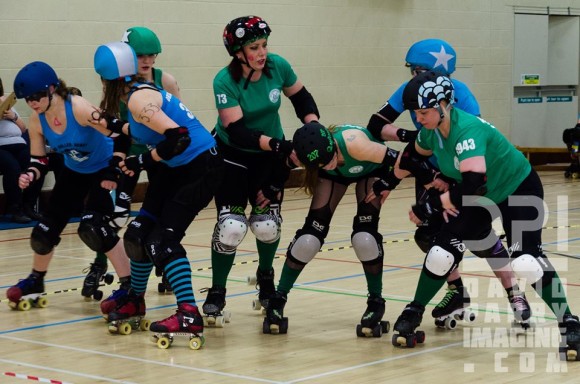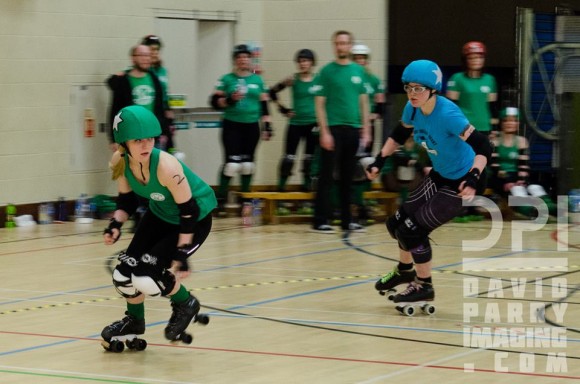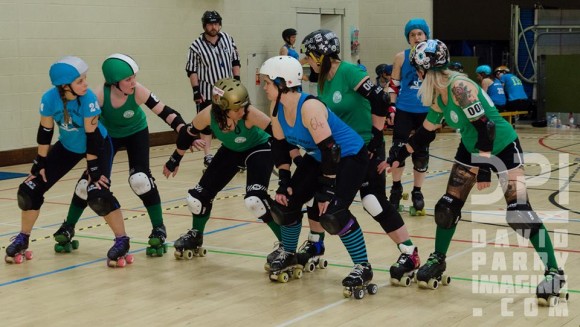Not really so long ago, I found myself responsible for coaching the Nottingham Roller Girls bout team for the first time. I quickly discovered that meant looking into 20 trusting faces, who all expected me to know what to teach them!

Derby is fascinatingly complex considering it’s basically British Bulldog on wheels. There are a million drills and a hundred tactics to choose from so, absurdly, my first response was “No problem!”
Thing is, I’ve learned that anyone can select random drills – but good coaching is about moulding a team who can play as a team. That means building up from the basics, week on week, leaving no players behind. For example, if you don’t drill a really good basic wall, then your players will have nothing to practise their awesome active offense against. Skip the basics and you’re just wasting training time.
What are the basics? Well, we’re all familiar with WFTDA minimum skills for individuals but even though derby is a team sport, there’s no universally accepted set of minimum skills for teams.
Below is my list. They’re all indispensable skills for any team throughout their careers. They’re also the absolute minimum skills needed to win using the (very) simple strategy outlined below. Enough to get any new team started.

Strategy
- When the opposition jammer is in/approaching the pack – form a lateral wall (at the back of the pack by preference).
- When only your jammer is in the pack – get to the back and use passive offense.
- When neither jammer is in the pack – maintain position, or get to the back if the opposition let you.

Blocking
- Lateral Walling – you need a flat wall able to flow around opposition blockers while staying roughly in formation and continuing to contain and slow the jammer.
- The Blocking Line – this is the most defensible line around the track. It touches the inside line on the first half of the corner. From the midpoint of the apex it comes back out to the middle of the straight. It then heads back to the inside line before the next corner. Your blockers need to form their walls on this line, forcing opposition jammers to take riskier/slower routes.
- When To Defend – practise forming a solid wall before the opposition jammer hits the pack, every time.
- Getting To The Back – if they find themselves in front, your players need to get to the back of the pack to make a passive offense work. Have them slow down on the blocking line so that your jammer can force the opposition around them.

Jamming
- Wall Breaking – jammers should not simply push walls forward but aim to force walls out of formation and/or off the blocking line.
- Maintaining Advantage – when jammers have passed a blocker they should defend their position by returning to the blocking line fast (so it is harder for the blocker to get back in front of them).
- Calling Off a Jam – jammers need to practise the timing of calling.
The Engagement Zone
- Passive Offense – give the opposition the minimum engagement zone to stop your jammer within.
- Reforming The Pack – avoid penalties: practise reforming.
- Bridging Forward – get the maximum engagement zone to stop the opposition jammer within. Communication is key.

Starts
- Giving Up The Back Line – abandon the back line if the opposition are positioned to bookend, or split your wall. Otherwise start on the jam line.
That’s about it. I hope newer teams/coaches find this helpful. See you on track!
Owl 2820
